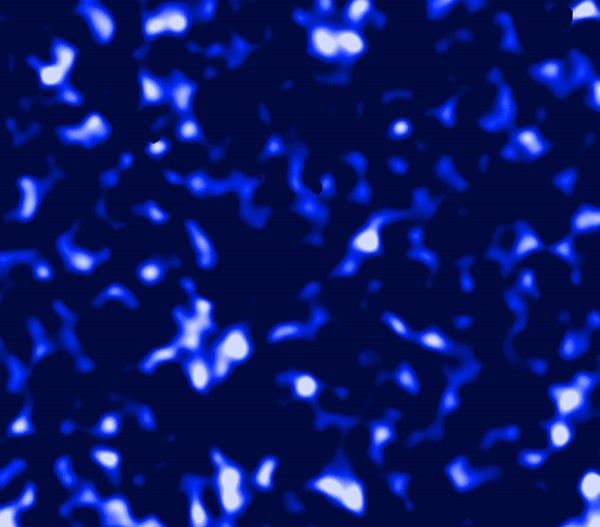An international team of researchers led by Ludovic Van Waerbeke from the University of British Columbia, Vancouver, Canada, and Catherine Heymans from the University of Edinburgh, Scotland, achieved its results by analyzing images of about 10 million galaxies in four different regions of the sky. The team studied the distortion of the light emitted from these galaxies, which bends when it passes massive clumps of dark matter during its journey to Earth.
The project, known as the Canada-France-Hawaii Telescope Lensing Survey (CFHTLenS), uses data from the Canada-France-Hawaii Telescope Legacy Survey. This project accumulated images over five years using the wide field imaging camera MegaCam, a 1° by 1° field-of-view, 340-megapixel camera on the CFHT in Hawaii.
Galaxies included in the survey are typically six billion light-years away. The light captured by the images used in the study was emitted when the universe was six billion years old — roughly half the age it is today.
The team’s result has been suspected for a long time from studies based on computer simulations, but it was difficult to verify owing to the invisible nature of dark matter. This is the first direct glimpse at dark matter on large scales showing the cosmic web in all directions.
“It is fascinating to be able to ‘see’ the dark matter using space-time distortion,” said Van Waerbeke. “It gives us privileged access to this mysterious mass in the universe that cannot be observed otherwise. Knowing how dark matter is distributed is the first step towards understanding its nature and how it fits within our current knowledge of physics.”
“By analyzing light from the distant universe, we can learn about what it has traveled through on its journey to reach us,” said Heymans. “We hope that by mapping more dark matter than has been studied before, we are a step closer to understanding this material and its relationship with the galaxies in our universe.”
“This dark matter study illustrates the strong legacy value of the CFHT Legacy Survey,” said Christian Veillet, CFHT executive director, “which is now enabling exciting results obtained by teams from many nations which use the images retrieved from the Canadian Astronomy Data Center where they are archived and publicly available.”
“This result has been achieved through advances in our analysis techniques that we are now applying to data from the Very Large Telescope’s (VLT) Survey Telescope in Chile,” said Lance Miller from Oxford University in the United Kingdom.
“Over the next three years, we will image more than 10 times the area mapped by CFHTLenS, bringing us ever closer to our goal of understanding the mysterious dark side of the universe,” said Koen Kuijken from Leiden University in the Netherlands.










